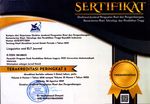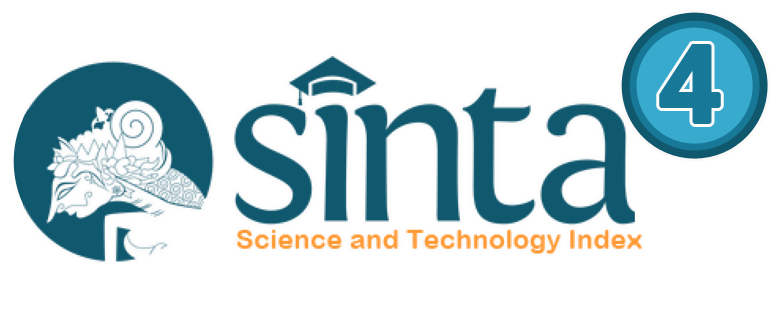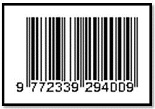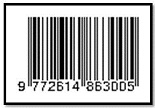Male and Female Language: Sociolinguistics in 'Wolf Gold' WhatsApp Chat
Abstract
Keywords
Full Text:
PDFReferences
Chen, L., Baird, A., and Straub, D. (2019). Why do participants continue to contribute? Evaluation of usefulness voting and commenting motivational affordances within an online knowledge community. Decis. Support Syst. 118, 21–32. doi: 10.1016/j.dss.2018.12.008
Sun, B., Mao, H., & Yin, C. (2020). Male and female users’ differences in online technology community based on text mining. Frontiers in Psychology, 11, 806.
Al Izzah, M. (2019). Language and Gender: Language Differences in Online Chat Room Conversation(Doctoral dissertation, Universitas Brawijaya).
Church, K., & De Oliveira, R. (2013, August). What's up with WhatsApp? Comparing mobile instant messaging behaviors with traditional SMS. In Proceedings of the 15th international conference on Human-computer interaction with mobile devices and services (pp. 352-361).
Djalilova, Z. O. (2021). Studies on gender linguistics in the field of Uzbek language. Academic research in educational sciences, 2(3), 391-397.
Holmes, Janet. 2013. An Introduction to Sociolinguistics: Fourth Edition. Lancaster University Geoffrey Leech & Mick Short. New York: Routledge.
Steen-Johnsen, K., & Enjolras, B. (2016). The fear of offending: social norms and freedom of expression. Society, 53, 352-362.
AbdAlgane, M. (2021). Gendered language: A study of sociolinguistic theories and approaches. Asian ESP Journal, 17(3.1).
Akhter, A. (2014). Differences in language use by male and female students in tertiary level academia in Dhaka city (Undergraduate thesis, BRAC University, Dhaka).
Siregar, I. (2021). Epistemological challenges against sociolinguistics. International Journal of Linguistics Studies, 1(2), 37-42.
Llamas, C., & Stockwell, P. (2019). Sociolinguistics. In An introduction to applied linguistics (pp. 146-164). Routledge.
Hall, K. ., Borba, R. ., & Hiramoto, M. . (2021). Thirty-year retrospective on language, gender and sexuality research: Special focus: Place. Gender and Language, 15(4), 525–526. https://doi.org/10.1558/genl.21540
Ginarti, D., Nurhapitudin, I., Ruminda, R., & Iksan, H. H. (2022). Study of Language Features Used by Male and Female in# SaveJohnnyDepp on Instagram and Twitter. Az-Zahra: Journal of Gender and Family Studies, 2(2), 127-142.
Coates, Jennifer (2004). Women, Men and Language: a Sociolinguistic Account of Gender Differences in Language, 3. ed., Longman, Harlow, 2004.
Lakoff, R. (1972). Language and woman's place. Language in society, 2(1), 45-79.
Nugraha, D. N. S. et all. (2022). Diferensiasi Linguistik Berdasarkan Gender Pada Podcast “Conan O’Brien Needs A Friend” Dalam Kajian Sosiolingistik. Jurnal Bahasa Inggris Terapan, 8(1), 1-17.
Hapsari, I, M. 2014.The Use Of Language Features Of Male And Female Authors In Two Short Stories The Yellow Wallpaper And A Rose For Emily (Degree thesis, Maulana Malik Ibrahim State Islamic University of Malang).
Juwita, T. P., et all. (2018). The differences between men and women’s language in The Devil Wears Prada movie. Ilmu Budaya: Jurnal Bahasa, Sastra, Seni, dan Budaya, 2(1), 43-52.
Tahir, A. A., Mahmud, M., & Mustikawati, Y. WOMEN’S LANGUAGE FEATURES OF THE MAIN FEMALE CHARACTER IN HARPER LEE’S TO KILL A MOCKINGBIRD.
Hennink, M., Hutter, I., & Bailey, A. (2020). Qualitative research methods. Sage.
Brennen, B. S. (2021). Qualitative research methods for media studies. routledge.
DOI: https://doi.org/10.31764/leltj.v12i2.27269
Refbacks
- There are currently no refbacks.
Copyright (c) 2024 Mutiara Romi Artika, Devi Sofilla, Wina Avrillia Handyanto, Khairun Nisa, Rahmadsyah Rangkuti

This work is licensed under a Creative Commons Attribution-ShareAlike 4.0 International License.
_____________________________________________________
Linguistics and ELT Journal
p-ISSN 2339-2940 | e-ISSN 2614-8633

LELTJ is licensed under a Creative Commons Attribution-ShareAlike 4.0 International License.
_____________________________________________________
LELTJ is abstracting & indexing in the following databases:
_____________________________________________________
LELTJ Editorial Office:













